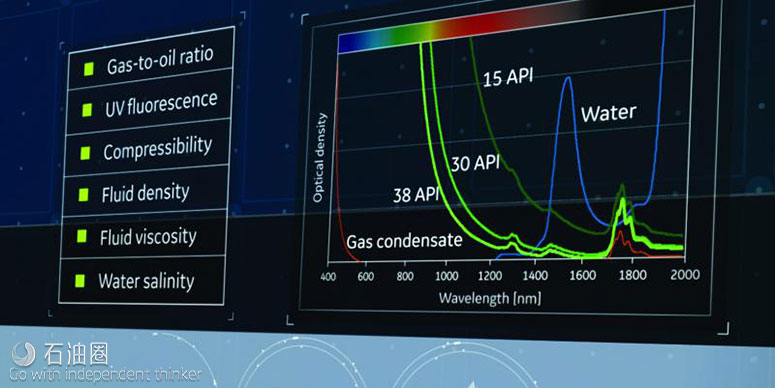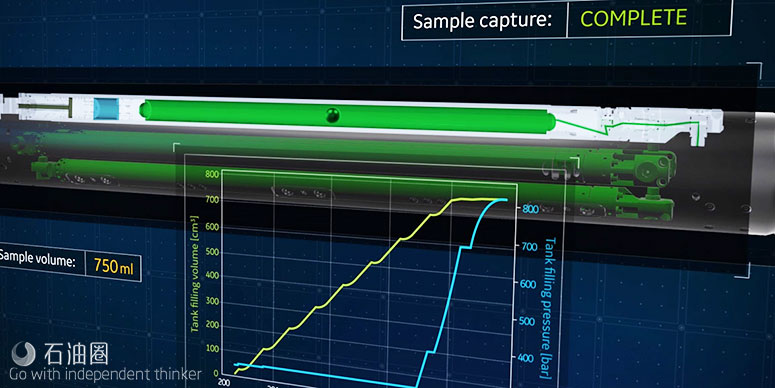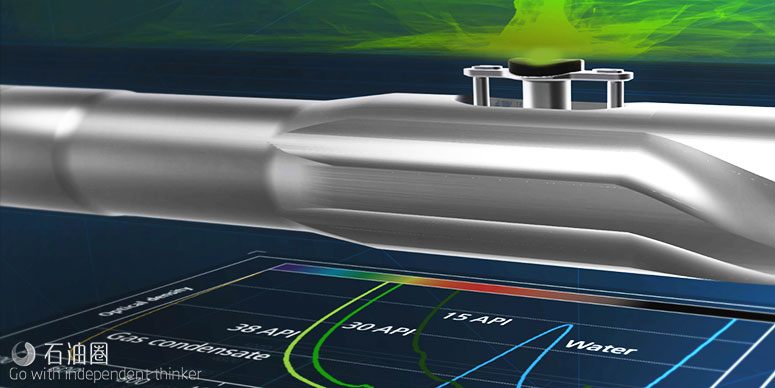Meeting Wellbore Complexity With Real-time Fluid Analysis Advances
The FASTrak Prism service employs advanced sensors—including the newly introduced VIS-NIR and fluorescence spectrometers—to fully characterize reservoir fluids in real time.
Though relatively new to the industry, fluid analysis and sampling-while-drilling techniques have quickly helped operators make more informed well construction decisions, eliminating risk and improving efficiency.
But as operators continue drilling geometrically complex wells into deeper and more remote reservoirs, fluid sampling services have to keep pace by developing more precise sensing capabilities. This was the motivation for Baker Hughes, a GE company (BHGE), to develop its FASTrak Prism fluid analysis and sampling- while-drilling service.
Real-time characterization of multiphase flows
This new service is built on the robust framework of the FASTrak, the industry’s first commercial fluid sampling- while-drilling service introduced in 2014. The original technology afforded real-time analysis of bulk fluid properties and acquired clean fluid samples for more detailed testing at the surface, both of which helped optimize completion designs and production plans.
The next-generation technology incorporates new sensors, including visible-to-near-infrared (VIS-NIR) spectrometry, to fully characterize reservoir fluids in real time. The tool’s multichannel optical density and fluorescence measurements accurately quantify fluid compositions in multiphase flows containing oil, gas and water. Additional sensors measure pressure-volume-temperature (PVT) properties such as fluid density, solution gas-oil ratio and fluid compressibility while providing measurement redundancy to give the operator greater confidence in the analysis results.
As with other LWD technologies, the sensors in this service relay information to surface in real time. The petrophysical team then uses proprietary software to evaluate the collected data in real time, which provides greater quality control, improved certainty of the measurements and faster decision-making.
For example, real-time PVT analysis informs the operator’s decision on which zones to complete and which ones to bypass. And the ability to analyze fluids while drilling provides additional information to fine-tune the reservoir navigation workflow, thus enabling timely confirmation of whether the well is still in the optimal pay zone or if a course correction is required.
The service’s probe is typically positioned 15 m to 30 m (50 ft to 100 ft) away from the drillbit and behind other formation evaluation-while-drilling tools. This positioning provides sufficient time to drill through the interval; evaluate the formation evaluation data such as nuclear magnetic resonance, resistivity and porosity; and pinpoint the optimal locations within each of the target reservoirs. This efficient approach of evaluating and then sampling the reservoir while drilling offers the added cost-saving benefit of limiting the reservoir’s exposure to the drilling mud, which means lower contamination samples can be acquired within two hours of setting the probe.
High-quality, high-volume sampling
Most field development decisions require more information than real-time fluid characterization alone provides. Operators routinely require 10 liters (2.6 gal) or more of fluid from different reservoir compartments to run analyses that help evaluate reserves, improve completion and surface facility designs and optimize the flow assurance program.
The original LWD fluid sampling service has successfully acquired high-quality fluid samples during drilling operations in many wells since its inception. The new service is similarly designed to acquire formation fluids of the same quality and volume for the range of laboratory analysis required.
During a sampling operation the service’s sensor array continually measures the properties of the pumped fluids and monitors for contaminants. Once the fluid’s quality has been confirmed, the service collects up to 12 liters (3.2 gal) of single-phase reservoir fluid per run and preserves them in 16 750-ml (566.3 oz) sample chambers prior to bringing them to surface for evaluation. This sizable fluid sample, which represents the largest total volume and most sampling chambers collected in a single run from any sampling- while-drilling service, helps operators make strategic development decisions more quickly and cost-effectively.
Reducing risk and time
The new LWD fluid sampling service is ideally suited for offshore, high-angle and extended-reach onshore wells— all applications that introduce considerable time and risk for conventional fluid sampling services. Wireline-conveyed testing and sampling techniques, for example, are commonly deployed to measure formation pressures and fluid properties but only after the drillstring has been pulled out of hole. In deeper wells with long lateral sections wireline tools require lengthy, risky and expensive pipe-conveyed logging operations. And in deepwater environments well integrity risks arise when the hole is left open for many days between drilling and the wireline run.
The new sampling service, by contrast, allows the operator to quickly identify the productive zones of interest, continue circulating to maintain well control and acquire fluid samples shortly after drilling the interval. And because this is accomplished with the same drillstring in the hole, the risk and time associated with performing an additional wireline run are eliminated.
After a wireline deployment the operator would typically need to go back in and recondition the drilling mud in the well prior to moving to the casing and/or completion phase. But by acquiring fluid samples while drilling, the new service ensures that the mud in the well is already conditioned. Once the drillstring is pulled out of hole, the operator immediately moves to the casing and/or completion stage, saving time and lowering construction costs in the process.
Optimizing production output
Since its introduction earlier this year the service has been deployed offshore, where rig rates are higher and the need for high-efficiency, low-risk operations is more acute.
An operator off the coast of Africa recently selected the technology to help drill a deepwater extendedreach well intersecting two reservoir compartments. Accurate fluid characterization was necessary to design the optimal completion for commingled production and to estimate each reservoir’s contribution to total production.
The operator needed high-quality single-phase samples and formation pressure tests from each reservoir while avoiding the extended rig time and deployment risks associated with pipe-conveyed wireline sampling. Any solution also would have to fit seamlessly with the reservoir navigation geosteering tools and an on-command downhole digital rat hole-reaming tool on the bottomhole assembly (BHA).
BHGE personnel worked closely with the operator’s field crews to develop a comprehensive formation evaluation plan while drilling. The new sampling-while-drilling service was deployed to collect samples in each reservoir per operator requirements for fluid volume and number of samples while also performing 33 formation pressure tests.
The section was drilled to its targeted measured depth with a final inclination of 90 degrees. All tests were performed in the 8½-in. hole prior to opening up to 9½-in. hole size with the reamer. The LWD sampling service also acquired fluid samples to calibrate downhole flowmeters and quantify each reservoir’s production contribution.
The new fluid sampling service did not interfere with the operation of the geosteering service, which accurately directed the well to maximize contact through the two target reservoirs. There was also no interference with the operation of the on-command digital reamer, which reamed the rat hole in the same drilling run.
This combination of technologies saved 48 hours of rig time while achieving well production output that exceeded initial targets by more than 30%.
Setting sampling records
An operator developing a new field offshore Australia required large volumes of high-quality fluid samples for detailed geochemical analysis to inform its completion, surface facilities and pipeline designs. Selecting the wrong metallurgy raised the possibility of reservoir fluids degrading or corroding completion and surface equipment, leading to significant costs and HSE risks.
The operator estimated that 20 liters (5.3 gal) of fluid were required for proper PVT analysis from the first wells, which were highly deviated with an inclination of up to 80 degrees. After discussing the specifics of the reservoir, the production goals and the completion challenges, the BHGE team recommended the fluid analysis and sampling-while-drilling service for this operation. The service would not only capture up to 400% more fluid volume than other sampling-while-drilling systems, but it also would avoid the differential sticking risks common to wireline sampling systems in deviated wells.
To save time in the analysis, the operator and service provider developed a sampling strategy that maximized fluid volume capture from two drilling runs on two different wells. The plan called for spending two hours on the wall at each sampling location followed by retracting the probe and adjusting the BHA to mitigate sticking risks.
The service captured 26 samples—12 from the first well and 14 from the second—with a total sample volume of more than 20 liters. This represented a global record for fluid sampling-while-drilling and an improvement over similar services that required at least four runs to reach the same volume goal.
This large sample volume allowed the operator to test and select all materials that would safeguard the integrity of the completion and surface equipment. And despite the extended on-wall sampling times and challenging hole inclination, the sampling service exhibited no differential sticking issues.
These early field successes are prompting other operators to take a closer look at FASTrak Prism’s potential for their high-risk wells.

 石油圈
石油圈


